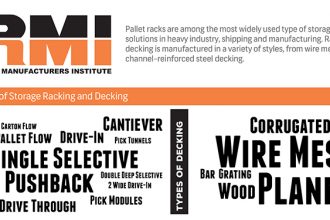Do These Four Things Before Reconfiguring Pallet Rack

With most pallet rack manufactured for adjustability and assembly in multiple configurations, an owner might think an existing installation can be safely reconfigured at will.
For example, to increase storage density, why not convert five-beam racking to six by decreasing the original distance between the beams? It might work, but it might not, as placing more loads within the reconfigured system could exceed the maximum capacity of the original system, creating an unsafe and failure-prone situation.
That’s because the vast majority of systems are engineered specifically for a single storage purpose. As explained in RMI’s ANSI MH16.1-2012: Specification for the Design, Testing and Utilization of Industrial Steel Storage Racks, section 1.4.5, if a pallet rack system is designed for more than one shelf configuration or profile, the Load Application and Rack Configuration Drawings should include all possible elevation configurations.
The capacity of the rack frame is determined by the vertical distance between shelf beams (which brace the structure) and the weight of the loads placed on the beams.
If an operation wants to modify load beam elevations and lacks this information in the drawings, these four things should be done before making any changes:
- Obtain original design documentation and drawings from the supplier or the rack manufacturer.
- Engage a licensed professional engineer to review the proposed racking configurations.
- Ask the engineer to analyze the existing structure to ensure that it will work with the proposed beam elevations.
- Thoroughly inspect the existing structure to determine if any components are damaged; replace or repair as necessary prior to reconfiguring the rack. This work should be done under the supervision of a licensed professional engineer.
Thinking of reconfiguring your current pallet rack? For more information about how to do it safely, visit RMI’s website.


